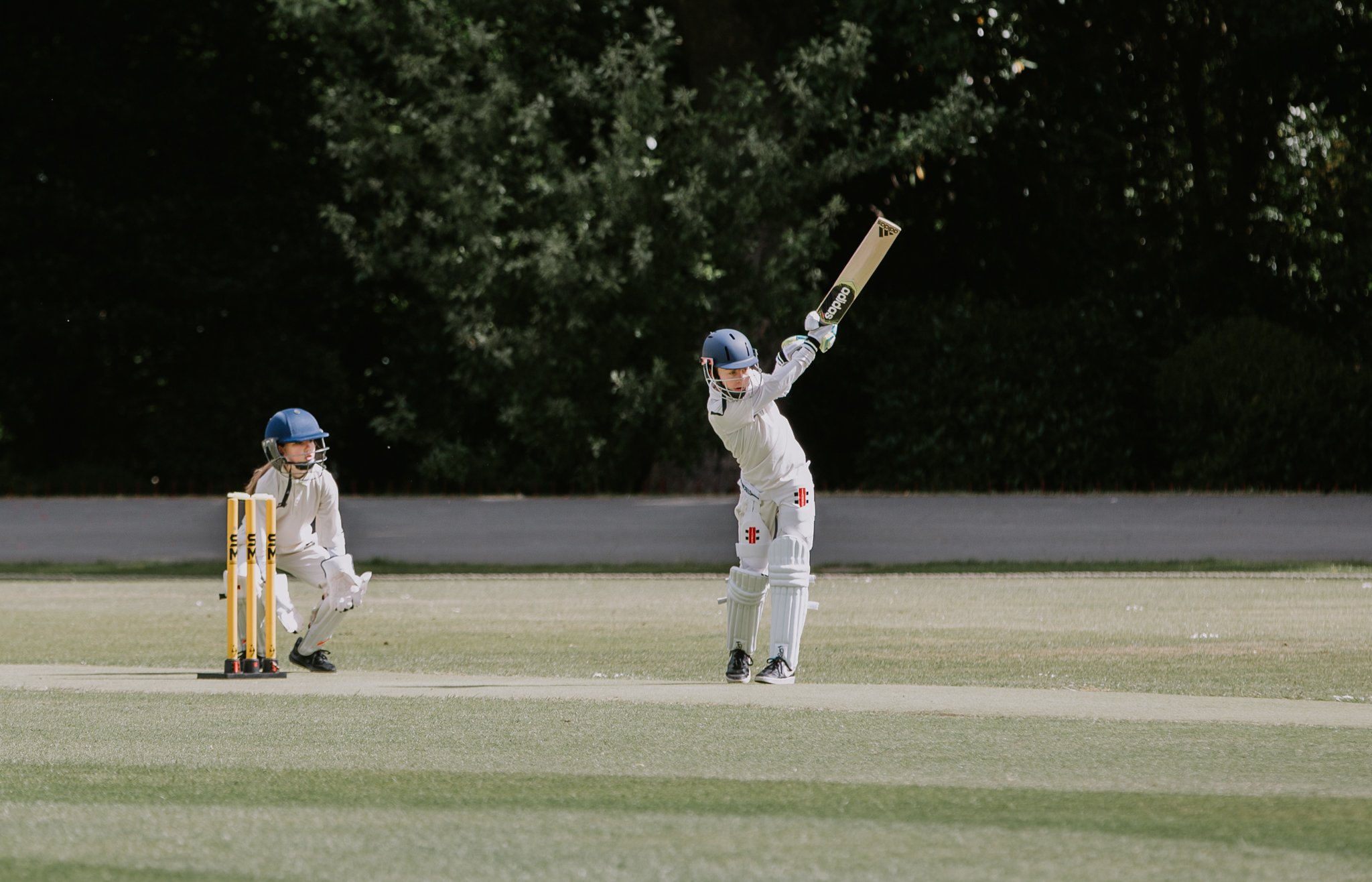An Extract from ‘Cricket in Chesterfield – A Century of Club and County Matches at Queen’s Park’

Cricket in Queen’s Park 1894-1945
Janet Murphy wrote the book ‘Cricket in Chesterfield – A Century of Club and County Matches at Queen’s Park’ in 2008. Janet is a well-known cricket supporter and local historian who wrote a companion book ‘For the People of Chesterfield For Ever: a short history of Queen’s Park’. She was Chair of the Friends of Queen’s Park for many years and is still an active member of the Chesterfield Cricket Lovers’ Society.
Janet has kindly agreed for us to use extracts of her book – copies of which are still available by going to the SHOP section on the website. We are extremely grateful to her for allowing us to do this.
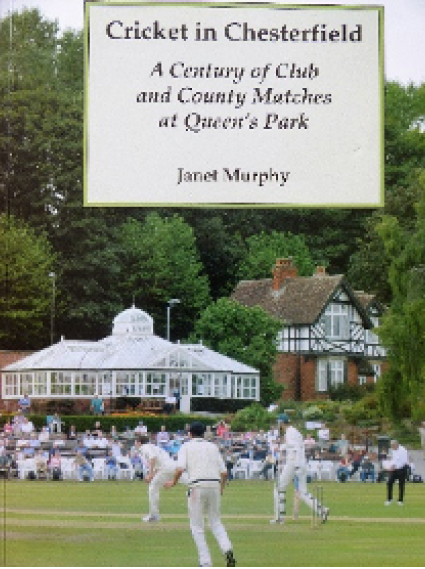
Queen’s Park was officially opened in August 1893, but the cricket ground wasn’t used until the following season. In February the Parks Committee met to lay down the rules for the cricket ground. The Chesterfield Town Cricket Club was granted the privilege of playing on the ground upon payment of half the annual subscription per member providing that the subscription was not less than 10s. Only members could practice and play in matches.
From the start, the pitch was recognised as excellent (the Parks Committee had paid £10 for the hire of a horse used for rolling and mowing the ground and paid the wages of the park keeper and his assistant to get the ground ready). Thoughts turned to having representative matches on the ground, Derbyshire having been given first-class status again in 1894. In 1897 Chesterfield Cricket Club applied for the Park to be closed for three days the following season for a county match, free of charge to the club who would make their own arrangements for the preparation of the ground. First however, a new pavilion was required, which was opened by the mayor on 28 April, just in time for the new season. The cost was £499 18s. 6d

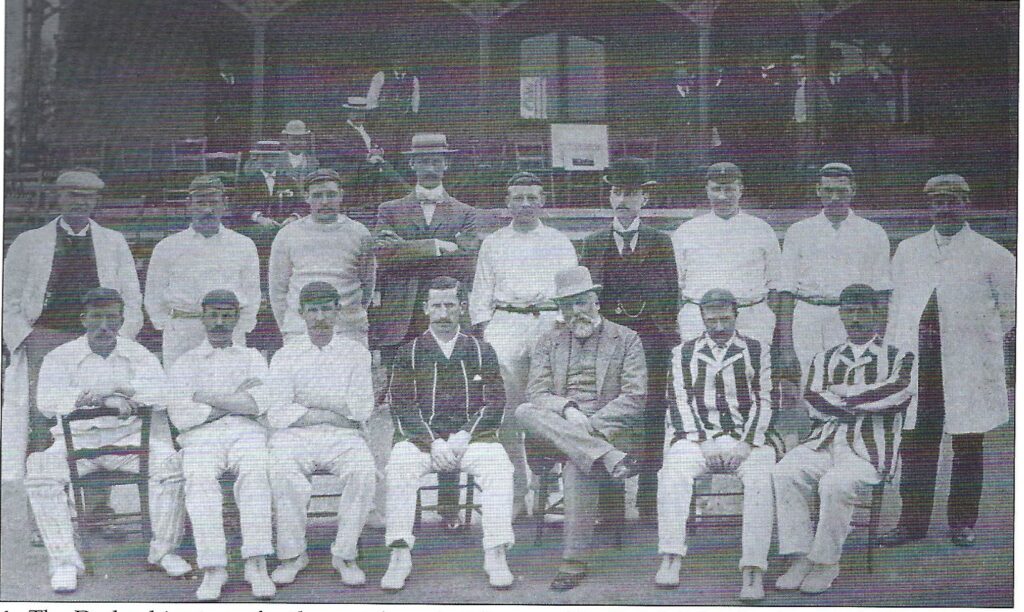
The first County Championship match at Queen’s Park was played on 30 June, 1 and 2 July 1898. Although Derbyshire were heavily defeated by Surrey, the match was a commercial success, and Walter Sugg asked for his benefit match against Yorkshire to be transferred to Chesterfield. The result was Derbyshire’s heaviest defeat ever as the Yorkshire openers amassed 554 runs in 305 minutes out of a total of 662 however Derbyshire did not have the best of luck. George Davidson broke down after bowling only one over.
By the time they batted the pitch was described as ‘worn’ and they were soon dismissed for 118. Following on they were 50 for one at the close of play with Frank Davidson not out 5. Despite the fact that Derbyshire were still 494 behind almost a thousand spectators turned up for the final day’s play. Unfortunately, Davidson had to retire on 5 because he had to go to Dudley to play in a club match; Charlesworth was unable to bat because of a broken finger and G. Davidson and Chatterton were also injured. The match had a farcical finish. When the luncheon bell rang the players left the field but, as the Derbyshire last wicket pair were at the crease, the players decided to return to the middle with the idea of bringing the game to a swift conclusion. Walker and Ashcroft, however, defended stubbornly and eventually lunch was taken with them still undefeated, only for the match to finish with the first ball after lunch. Sugg made £340 from the match.
The Derbyshire Times recounted the work involved in connection with the match:
‘The number of Press and ordinary work in connection with the County match reached the enormous total of 5,000 messages, the Press totalling 63,000 words, which is a record for the county. Although the local staff was reinforced by four telegraphists from Derby, in the charge of Mr Elks, and a Wheatstone transmitter, the pressure of work was so heavy that none of the men were able to leave the building from 11 a.m. to 9 p.m. and it is pleasing to be able to state that every item was disposed of in admirable time, the wants of the inner man being sacrificed to duty.’
In October 1898 Chesterfield Cricket Club applied to have exclusive use of the ground and pavilion with power to allow the use by other cricket clubs in the borough. They undertook to keep the ground in order, without any claim on the Corporation. They also had to pay for the days the Park was closed for cricket; the Corporation wanted £30 per first-class match but reduced the fee to £25 on appeal.
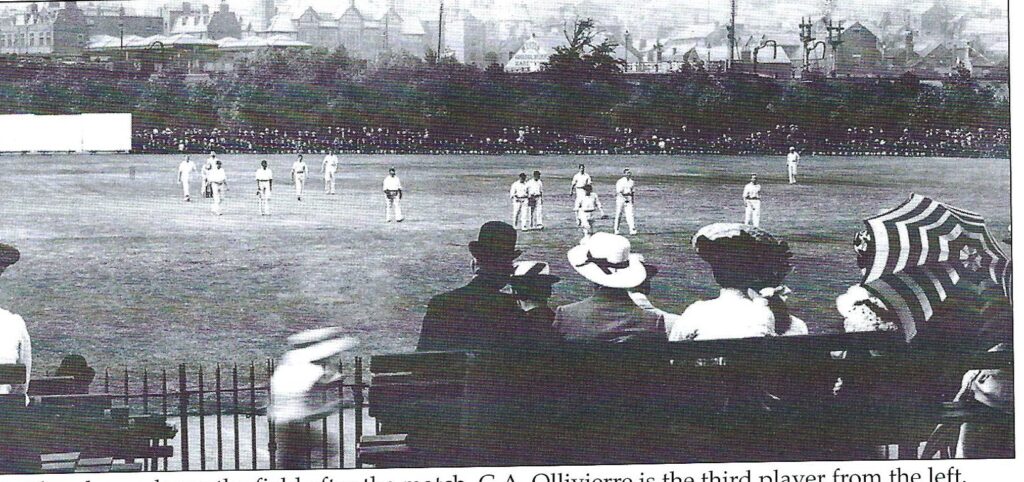
From the start, events in the Park were hugely popular and, in 1900, a terrace was built to the west of the pavilion at a cost of £264 8s. 6d. Seating was provided – planks of wood on iron supports. This also meant that all cricket clubs using the Park could charge admission to the terrace and pavilion. Admission to the enclosure was set at 2d., to be shared out amongst the cricket clubs.
As early as 1914 the Derbyshire Courier said that Chesterfield had been the venue of many remarkable matches; it then reported a sensational ending to the match with Yorkshire as Derbyshire collapsed from 67 for four to 68 all out. Arthur Morton, who opened the innings, scored 50 and was the last out. Six batsmen did not trouble the scorers and, for Yorkshire, Drake took five wickets for six runs including four wickets in four balls and Rhodes four wickets for 12. The writer put it down to Yorkshire’s good luck as Derbyshire had the worst of the batting conditions.
As well as maintaining the ground, Chesterfield CC was also responsible for the catering arrangements during matches, the provision and removal of extra seating at county matches and the employment of gatemen. They also had to pay the Corporation for the days the Park was closed for cricket matches. Income came from subscriptions and a percentage of the gate receipts from the County Club, which was often late in paying. No wonder that the club was frequently overdrawn. It continued to be responsible for the arrangements for the use of the ground by clubs as diverse as the Tube Works, Chesterfield Butchers, Holywell Cross Primitive Methodist Chapel, Chesterfield Grammar School and the County Police.
Derbyshire went through a difficult period after the war; in 1920 one match at Chesterfield was abandoned, the rest were lost. Unfortunately for Joe Humphries the abandoned match, which was against Nottinghamshire, should have been his benefit match – fortunately, he was insured. Chesterfield Cricket Club was frequently asked to contribute money raised by events such as whist drives to the County Club’s funds.
By 1921 the pavilion was reported to be in a dilapidated state. Three years later the borough surveyor was requested to provide ‘plans and estimates for substitution of glass for the slate veranda roof and increasing the seating thereunder ‘. There is no indication that this was ever carried out – it would surely have been extremely dangerous to sit there!
When the Park was originally opened in 1893 the bye-laws only allowed it to be closed for 12 days in a year. By 1923 there were five county cricket matches being played and the Park was also being closed for the flower show and sports such as cycling and athletics. To regularise the position a clause in the Chesterfield Corporation Bill of that year (which sought to extend the boundaries of the borough) included a proposal that the Corporation should be able to close the Park for 24 days a year.
In support it was stated that:
The County Cricket Club look to Chesterfield for the main support of the county. They get more out of Chesterfield than all the other parts of the county put together, and more is taken at Chesterfield in one match than in three at Derby.
The Australians visited Chesterfield for the first time in 1926. Arrangements for the match included a temporary enclosure (admission 2s.), a press tent furnished with two tables costing 8s. each, an R.A.C. man to direct traffic and white rosettes for the committee members. Despite the 2s. gate money and poor weather there was a crowd of several thousand on each of the two days.
The Australian press was not impressed with the performance of their team on that tour. C.G. Macartney of the Evening News wrote:
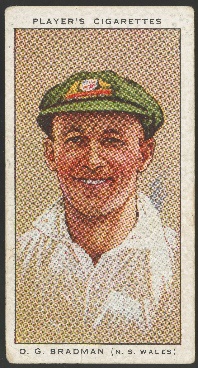
‘It was a poor exhibition of bowling… There was a lack of life about the fielding, while returns to the wicket were awkward and erratic… The Australians did not show to advantage in strategy in this game, nor was the batting, in most cases, impressive.’
Despite this critical report Australia won by ten wickets. For Derbyshire, Worthington scored 75 in 125 minutes and followed it with four for 103 including Ponsford, Jackson and Bradman, the latter’s batting was described as ‘scratchy’! He made up for it four years later when he made an elegant 71.
In 1929 the Corporation spent £105 on repairing and renovating the central portion of the pavilion. At the same time the pavilion was greatly extended thanks to the generosity of Alderman G.A. Eastwood, the club’s president and a past player. Additional changing-rooms were added at either side with office space above, and two small balconies. The balconies were made into one long one in 1953, but no major changes were made to the layout until the restoration in 2001.
Expenses increased as ground rental rose from £30 to £50 and the share of the county gate was reduced from 15 per cent to 10 per cent.
The 1930s were the golden years for Derbyshire, who were third in the County Championship in 1934, second in 1935 and winners in 1936. Of the winning eleven, six played for England at some stage of their career, Harry Elliott, Leslie Townsend, Bill Copson, Denis Smith, Stan Worthington and Tommy Mitchell. Three others played in almost every game, Alf Pope, Arthur Richardson (captain) and Albert Alderman. George Pope was missing for most of the season because of injury. The most remarkable game of the season at Chesterfield was against Northants when A.H. Bakewell carried his bat for 241 not out in the second innings to deny Derbyshire. Northamptonshire declared on 411 for 6 with Alf Pope taking all six wickets for 129 (10 for 187 in the match). Mitchell was unable to bowl in the second innings because of a broken finger; fortunately, it was almost the end of the season. Sadly, on the way home from the match there was a car accident in which Bakewell broke his arm so badly that he never played Championship cricket again. R.P. Northway, his opening partner, was killed.
Photo Credits: (1) Chesterfield Museum and Art Gallery, (2) TP Wood’s Almanac 1899, (3) D Tyler

